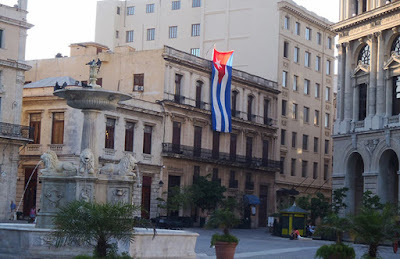For more than five
decades, a U.S. embargo against Cuba has prevented
Americans from traveling to the island nation for any reason outside official
government business. President John F. Kennedy established the embargo in 1962
as an attempt to choke the Communist-affiliated country's economy, and thus
reduce its influence. During the intervening years, the U.S. government has
refused to lift the embargo, citing the Castro regime's poor humanitarian
rating and brutal treatment of its citizens.
Cuban Travel Restrictions Slowly Being Eased
In late 2014, President
Barack Obama began efforts to re-establish a friendly relationship between the United States and Cuba.
The president argued amiable relations are the first step toward compelling the
country's government to install better economic and living conditions for its
people. The first step taken by Obama, in January 2015, was lifting certain
travel bans on Americans going to Cuba. While tourism to the country is still
prohibited, Americans can apply to visit Cuba for the purpose of education,
missionary work or visiting relatives.
Travel enthusiasts, as
of summer 2015, are optimistic that a full repeal of Cuban travel restrictions
could become a reality in the near future. When this happens, one of the most
common questions is sure to involve the cost of visiting Cuba as an American
tourist.
Passports and Immunization
The first order of
business when planning a Cuban trip, after waiting for travel bans to be
lifted, is securing a passport and receiving necessary inoculations. As of
2015, the cost of a new passport is $110 for those over age 16, and it usually
takes several weeks to receive it. Expedited service can run an additional $100
to $300 depending on how fast you need it and how close you are to a passport
office.
Travel experts also
recommend anyone going to Cuba first receive vaccines for typhoid and
hepatitis. The estimated out-of-pocket cost for a typhoid vaccine is between
$100 and $150; for a hepatitis vaccine, it can range between $100 and $320.
Health Insurance
Cuba requires all
visitors to provide proof of health insurance coverage upon arriving at
the airport or seaport. Assuming you are covered in the U.S., this poses no
additional cost to your Cuba trip.
If you lack health
insurance before heading to Cuba, you must purchase it at the airport before
being allowed into the country. This runs about $5 per day, but buyer beware:
Travelers from other parts of the world comment frequently that this coverage
is lackluster.
Airfare
Due to widespread Cuban
travel from the U.S. not yet being available, air travel to Cuba is expensive.
The cost will likely come down, however, when all bans are lifted and more
airlines provide flights to Havana. Flying to Havana frequently requires first
reaching a Latin American destination, such as Mexico City, though value
airline JetBlue (JBLU) began offering direct charter service from New York to
Havana in July 2015. The average ticket cost ranges between $500 and $700 round
trip.
Organized Tours
Until the government
fully lifts travel bans, the easiest way for the average American to visit Cuba
is through a licensed educational tour company. Because education is an
approved reason for Cuban travel, these tour companies are able to chauffeur
ordinary Americans to the country. The cost is steep, however, at $2,000 or
more per person, which usually does not include airfare.
Exchange Rate
Tourists can exchange
their money for Cuban convertible pesos, or CUCs, which are pegged to the U.S.
dollar at an exchange rate of 1:1. It is advisable,
however, to convert American money to Canadian dollars or Euros before going to
Cuba. The country imposes an additional charge for converting American money to
CUCs.

